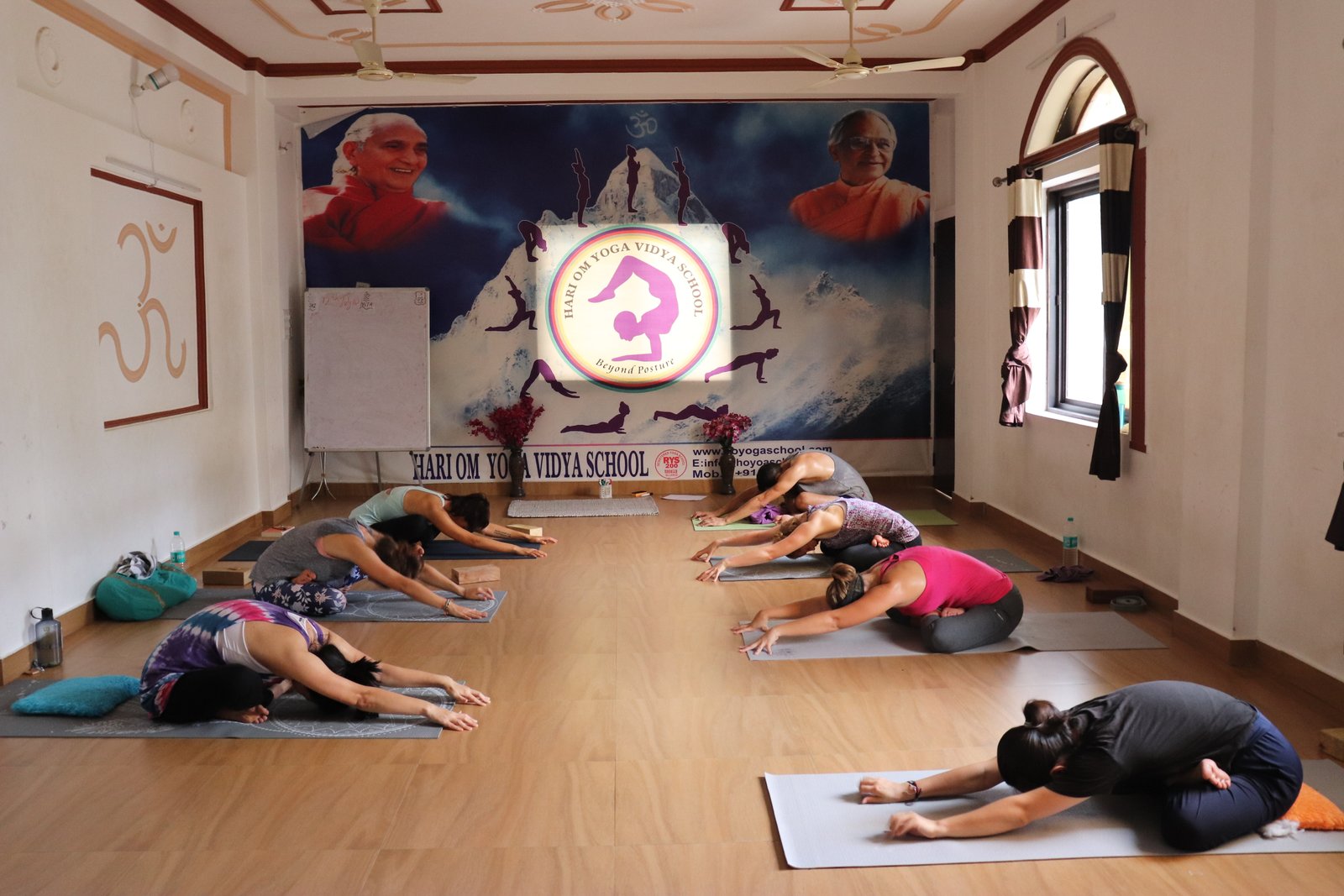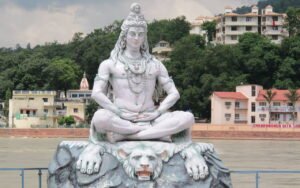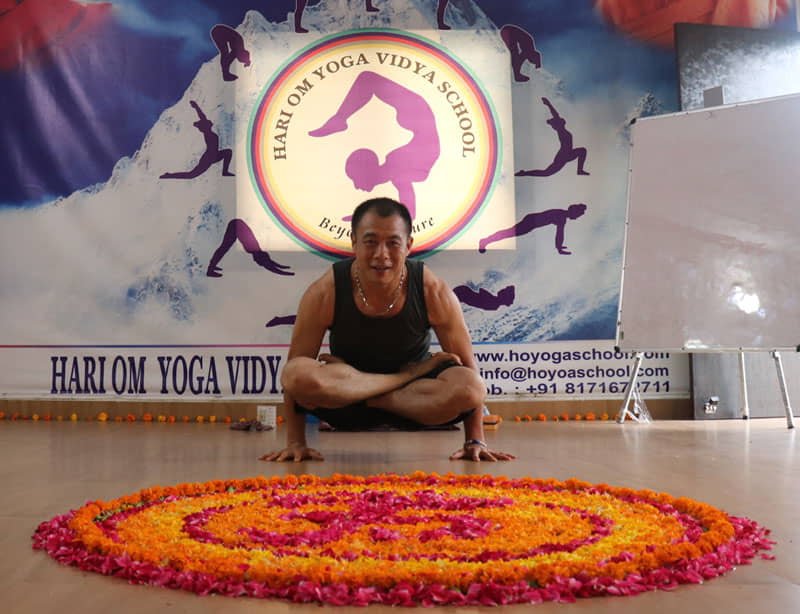Part – 1/3 | 8 Limbs of Yoga as Royal Path by Shree Patanjali : The First Two Limbs Decoded – Yama And Niyama
The renowned sage, Patanjali had classified Ashtanga Yoga as a part of the Classical yoga. It was set out in his Yoga Sutras, as the eight limbs on which a man has to tread, before he achieves salvation. He had defined the eight limbs very clearly, as yama, niyama, asana, pranayama, pratyahara, dharana, dhyana, and samadhi.
These eight limbs form a sequence from the external body to the interiors. It is already evident from myriad scriptures, that yoga is a holistic science, that concerns the body, mind, and soul. The postures that you see in yoga, comprise the outer circle. It is just one limb of yoga. The yoga schools in Rishikesh not only stress the development of your physical strength, but your mental one as well.
How Does One Define Yoga?
In the very first sutra, Patanjali penned down the main purpose of the book. He also defined the word ‘Yoga’, in his second sutra. He has defined yoga as inhibition, (or nirodhah), of the modifications (or vritti), of the mind (or chitta). The ultimate connotations translate into the identification of the true self, when the mind becomes still, according to the sages, practicing yoga at Rishikesh.
So, now we come to the practice that you do, or mostly see others doing. So, it is ultimately more than just a physical practice. You can call it a way to get healthy. Some believe that it may mean meditating, or chanting mantras for some, and worshipping their favorite deity. Yoga means ‘unity’. The yoga school in India concentrate on a holistic development pattern.
Yoga goes beyond asanas. It is more than just stretching, contorting, twisting, and balancing. All this is beneficial for the development of a healthy body, which will lead to the development of a beautiful mind. It opens the gateway to a sense of being ‘Alive’. Asanas are just one part of yoga. You will be able to find more information on such aspects in the Hatha Yoga Pradipika and The Yoga Sutras. They actually focus very little on physical yoga.
The scripts concentrate more on the tantric traditions. You will mainly find the origins of the postures in such yogic texts. If you go much deeper into the realm of the Yoga Sutras, in the yoga centre in rishikesh, you will find that the book is very philosophical in nature.
In this context, today you will first know in more detail, about the first two limbs – Yama and Niyama.
The Ethical Guides – Yama and Niyama
According to the best yoga school in Rishikesh, the first two limbs are the ethical guidelines. This is a map, which is a guide to the life’s journey. If you simply put it in words, Yama means restraint, or the things which you should not do. And, Niyama are the things that you should inculcate in your daily practice. They act as the moral code of conduct for the yogis.
Let us first delve into the five Yamas. They are:
- Ahimsa
- Satya
- Asteya
- Brahmacharya
- Aparigraha
And the five Niyamas are:
- Saucha
- Santosha
- Tapas
- Svadhyaya
- Ishvara Pranidhana
If you want to practice and gain the complete practical knowledge of the yama and niyama, you must live them, as per Gandhiji. He was one of the people, the father of the nation, who practices what he preached.

Learning About Each Yama in Detail
- Let us take the example of Ahimsa. It translates into non-violence. It is not just refraining from hurting others, but it also means not speaking ill about another person. One can also practice ahimsa, by refraining from eating non-vegetarian food. That is why, you will find yogic texts stressing on veganism or a sattvic diet per se.
- According to the best yoga center in Rishikesh, Satya means truthfulness. It means, that you should you should refrain from telling lies. It also translates into the true nature or true essence. The word ‘Sat’ means ‘true’. You will notice, that for a major portion of the time, people refrain from seeing the truth. ‘Sat’ also means unchangeable. Truthfulness not only pertains to others, but that of the self as well.
- Asteya translates to non-stealing. It is the third yama out of the five yamas. Moreover, it is much more, than physical non-stealing. You will find the mention of Asteya in the Mahabharata, Yoga Sutras, and also the Bhagavad Gita. The practice of non-stealing is also a part of the eleven vows. The mankind also has a greed for artificial things, and cravings which also translate into Asteya. According to Swami Sivananda, any kind of desire amounts to Asteya.
- In the same manner, Brahmacharya refers to the process of moderation. It can translate into moderate eating habits, abstinence from practices that can suck away all the energy from the body and mind. It also denotes celibacy. This is a vow or oath, that all yogis take when they start treading on the path to salvation or nirvana. If one utilizes all the bodily energies toward physical intimacy with the opposite sex, it leads to a depletion of the primal energy.
- Aparigraha is the last of the yamas, or restraints. It means the practice of non-attachment. It is also one of the central teachings from the Bhagavad Gita. It is one of the most important teachings of Krishna. You should follow this, in all aspects, while practicing yoga. You should not get attached to any practice. Moreover, do not always look for the reward. The joy of practice is the greatest reward of all times. If you ate treading on the path of yoga, you must practice non-attachment in all areas, like house, work, leisure, and devotion. Do not get attached to the results. This is what the best yoga center in Rishikesh will tell you.

Decoding the Five Niyamas
So, by now, you probably know what the Niyamas are. They are positive duties that you ought to practice in life. These are practices that mainly concern the individual, but may also impact others.
- Cleanliness or Saucha is the first one that Patanjali mentions in his Eight limbs theory. It appears before asanas, as you have to start your practice after bathing and purifying yourself, both mentally and physically. If there is impurity around you, you cannot progress ahead in a positive manner. Here we are not just talking about the physical ones, but the mental ones as well. Habits should also be pure. The Hatha Yoga Pradipika enlists certain cleansing techniques such as Neti, Dhauti, Basti, Nauli, and Trataka. Additionally, you should maintain ‘Saucha’ not only during your yoga practice, but at home, in the mind, in the class, and so on.
- Santosha translates into contentment. If you are not content with what you have, you will never move a step ahead towards Nirvana. It mainly concerns sitting back and appreciating whatever life has given you. According to the Bhagavad Gita, the idea stems from ‘Vairagya’. You will get one step closer, through the yoga teacher training Rishikesh. When you depend on external things to get happiness, discontent rises in every sphere. The attachment can ultimately be very tempting. You should practice gratitude and to foster contentment in every aspect of your life.
- Tapas is the burning enthusiasm, that pushes everyone forward in their lives. It mainly evokes a sense of fire and passion, in all that you do. Discipline in the truest sense, does not always mean pushing yourself on the mat, until you achieve perfection in a certain posture. Tapas also engages off the mat situations. For e.g., when you feel that you cannot attempt a difficult posture, and take the failure in your stride, it also amounts to passion. It is passion for your own self. Tapas and the element of fire are interlinked. It can also denote, living outside your comfort zone.
- The fourth niyama according to Patanjali is Svadhyaya. Sva means the self and Adhyaya means lesson. Thus, it mainly implies self-study.
Patanjali’s Yoga Sutra says: “Study thy self, discover the divine” – Quoted
It is advised that you read the numerous spiritual texts in totality. Such texts include The Yoga Sutras, The Bhagavad Gita and The Hatha Yoga Pradipika. You need to practice it in everyday life, not just on the yoga mat. It mainly focuses on self-study and education that you can lay your hands on.
- Ishvara Pranidhana is the last Niyama that as a yogi, you are encouraged to practice. It means surrendering the higher being or universal consciousness. The 500 hour yoga teacher training in Rishikesh will definitely take you one step closer to it. Swami Satchidananda has said that, if you master this Niyama, you do not need to practice the others. The last Niyama mainly translates into Supreme God and True self. One of the easiest pathways, it is often the most difficult one to follow. It mainly means ‘letting go’. Each one of you is so much interested in controlling, that you forget the meaning of ‘letting go.’ If you can master ‘Surrender’, you have mastered it all. You should surrender to rest, to your practice, and also to your dharma. Simply learn to trust the universe, and everything will fall into place. Trace your life to the yoga retreat in Rishikesh and surrender.

Deepen Your Yoga Practice with Hari Om Yoga Vidya School
Located in the heart of Rishikesh, Hari Om Yoga Vidya School is a place where ancient yogic wisdom meets modern teaching techniques. As a top yoga school in Rishikesh, we are committed to providing authentic, immersive yoga education in a peaceful, spiritual setting. Recognized as one of the best yoga schools in Rishikesh, we offer structured training programs designed to help you evolve in your practice, whether you are a beginner or an experienced yogi.
If you’re searching for a yoga school in Rishikesh that focuses on holistic learning, experienced teachers, and a supportive community, look no further!
Explore Our Yoga Teacher Training & Retreats
At Hari Om Yoga Vidya School, we offer a range of courses tailored for different levels of practitioners:
✅ 100-Hour Yoga Teacher Training in Rishikesh – A foundational course for those looking to begin their yoga journey.
✅ 200-Hour Yoga Teacher Training in Rishikesh – An internationally recognized certification for aspiring yoga teachers.
✅ 300-Hour Yoga Teacher Training in Rishikesh – Advanced training to deepen your practice and refine your teaching skills.
✅ 7-Day Yoga Retreat in Rishikesh – A rejuvenating escape into yoga, meditation, and self-discovery.
✅ 10-Day Yoga Retreats in Rishikesh – A transformative experience that blends yoga, relaxation, and Himalayan serenity.
Join us for a life-changing experience and become part of our global yoga family! 🌿✨



